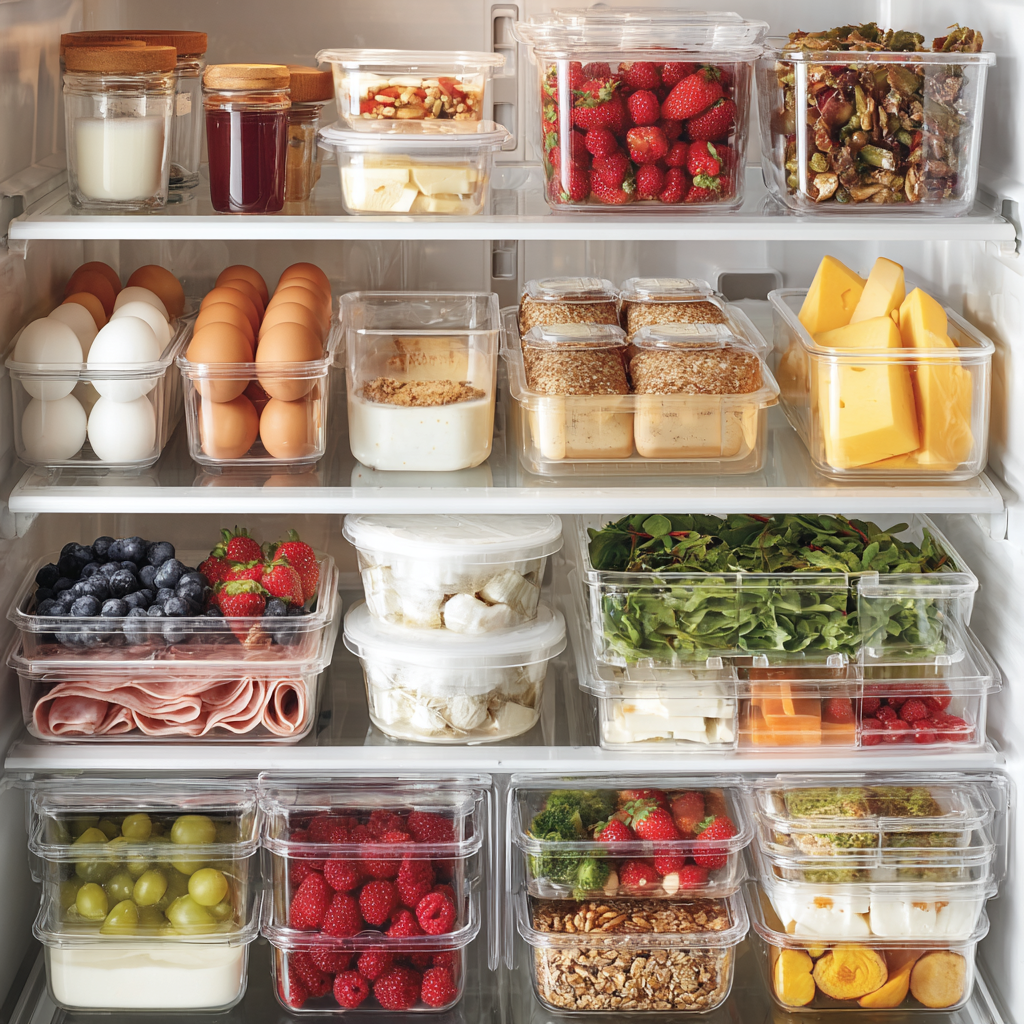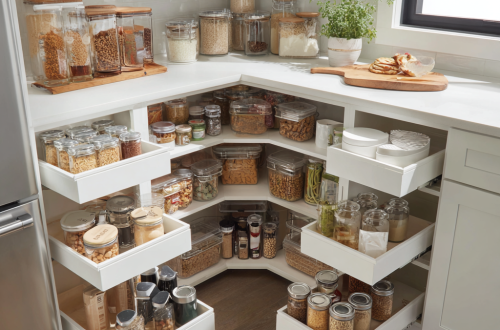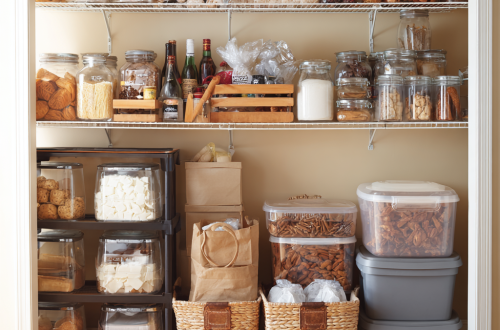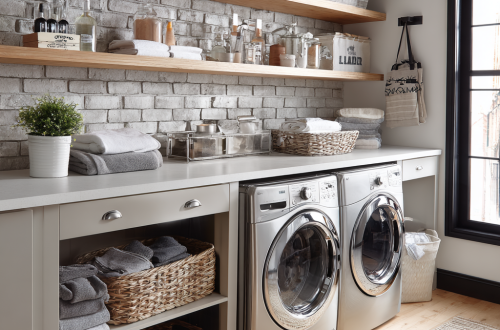13 Organizing Hacks for Your Tidiest Fridge Yet
Let me be honest with y’all: my fridge is not exactly the cover model of kitchen appliance magazines. It’s old, a bit noisy, and somewhere between white and what I call “vintage cream.” No fancy French doors or built-in sparkling water dispensers here. But you know what? It’s tidy as heck. You could walk into my kitchen, pop open that fridge door, and not recoil in horror. You might even smile at the clear organization, fresh produce, and neatly labeled leftovers.
Here’s the thing: even if your fridge isn’t the latest model, a little love and smart organization can make a huge difference. A well-organized fridge saves time, reduces waste, and makes cooking more enjoyable. Let’s dive into 13 of my favorite fridge organizing hacks that’ll make your kitchen feel fresher, neater, and more efficient.
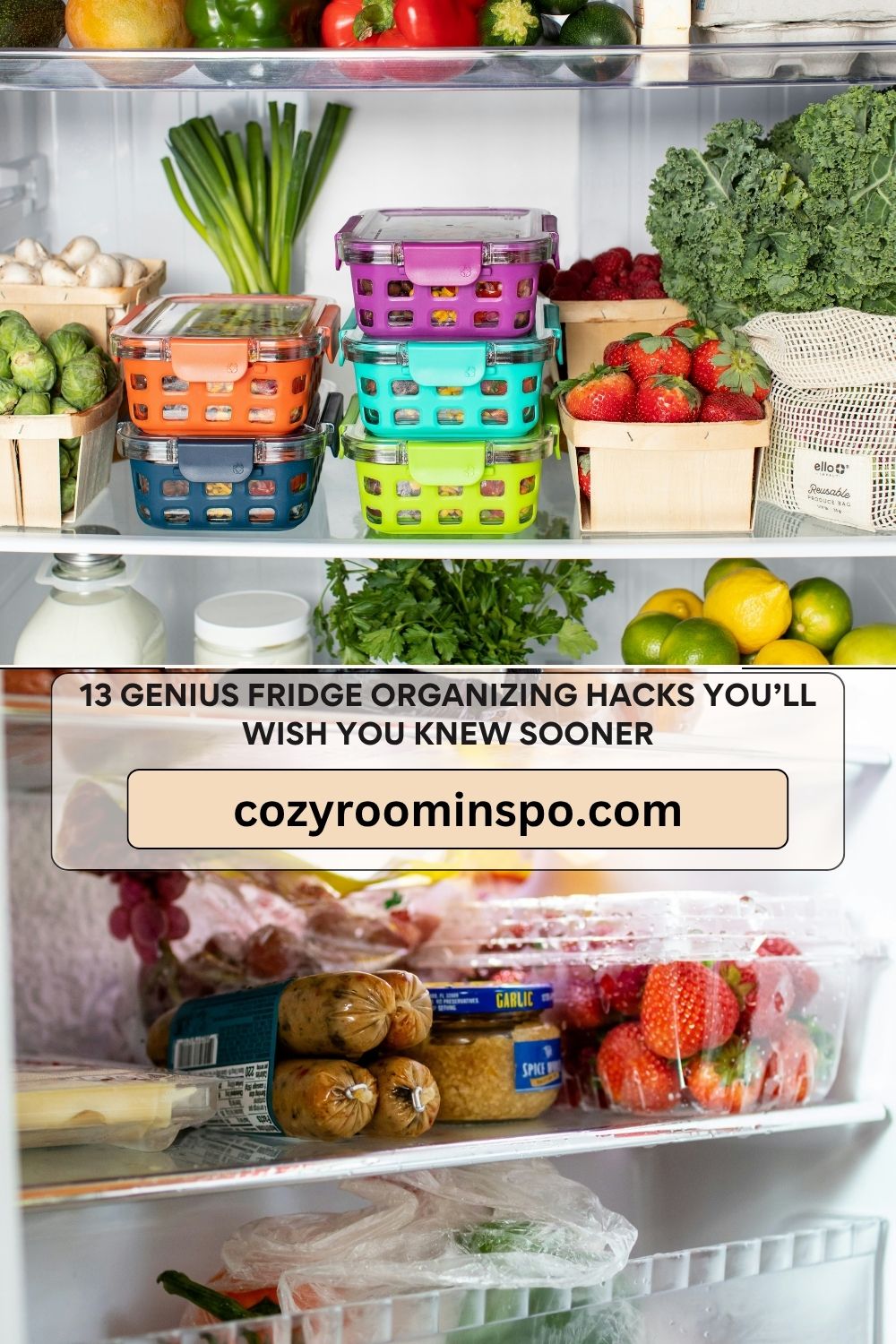
Photos by Ello , Darrien Staton on Unsplash
1. Label Everything
One of the simplest and most powerful habits I’ve adopted is labeling. Whether it’s a mason jar of homemade pesto, a leftover casserole, or even a tub of cut fruit, a clear label with the name and date makes a world of difference.
Think about how restaurants operate: everything is labeled and dated for a reason. It reduces food waste, keeps everyone safe, and ensures that nothing funky lurks in the back corner. You don’t need a fancy label maker (though I do love mine!). A roll of masking tape and a Sharpie will do just fine.
Labeling also encourages accountability. When you see a container marked “chicken soup – July 12,” you know exactly what it is and when it needs to be eaten. No more sniff tests. No more mystery jars. And if you live with others? Labels make it easy for them to navigate the fridge without bombarding you with, “Is this still good?” every time.
Bonus tip: Keep a small roll of tape and a marker in a kitchen drawer near the fridge so you always have them on hand.

2. Separate Certain Fruits and Vegetables
Not all produce likes to hang out together. In fact, some fruits and vegetables can cause others to spoil faster just by being nearby. Understanding the relationships between your produce can seriously extend its freshness.
For example, apples and bananas release ethylene gas, which can speed up ripening (and rotting) in nearby items like leafy greens or berries. Store those gas-emitting fruits separately, ideally in a different drawer.
Another trick? Remove plastic bags or packaging from produce. Those bags trap moisture and can accelerate decay. Instead, store items loosely or in breathable produce bags. If your lettuce is always going limp within days, try wrapping it in a dry paper towel and placing it in a perforated container.
Soft fruits like berries and peaches should be stored higher up where it’s slightly warmer, while hearty veggies like carrots and broccoli do best in the crisper drawers. And remember: the fridge is not one-size-fits-all. Tailor your storage to each item’s needs and you’ll get more mileage out of your groceries.

3. Make Use of Baskets and Bins
Your fridge deserves the same love and structure as your pantry. That means baskets, bins, trays—even a lazy Susan or two!
Group like items together using clear bins or baskets: all your sandwich fixings in one, all your smoothie ingredients in another. Not only does this help you find things faster, but it also makes clean-up easier. Spills? They’re contained. Need to grab everything for taco night? Just pull out the “Mexican night” bin.
Use tiered organizers for shorter items like yogurt cups or drink cans to prevent the dreaded fridge Tetris. And for those awkward condiments that always end up hiding in the back? Lazy Susans are your best friend. Give them a spin and you’ll never lose track of the sriracha again.
Pro tip: Use removable labels on your bins to keep things super clear and easy to maintain.

4. Treat Soft Herbs Like a Bouquet of Flowers
Raise your hand if your cilantro turns into goo within days. I’ve been there. But once I learned to treat my herbs like flowers, everything changed.
Trim the stems of soft herbs (think cilantro, parsley, basil), place them in a jar with an inch or two of water, and loosely cover the tops with a produce bag. Store the whole setup in the fridge (except for basil, which prefers room temp).
This method mimics a flower bouquet and keeps your herbs perky and green for much longer. It’s easy, it’s pretty, and it works. If you cook often, you’ll appreciate not needing to buy a fresh bunch every few days.
Bonus tip: Change the water every 2-3 days to keep things fresh. You’ll be amazed at how long your herbs last!

5. Give Pantry Products a New Home
You might be surprised how many so-called pantry items actually thrive in the fridge. Think soy sauce, natural nut butters, yeast, maple syrup, and even certain flours.
Storing these items in the fridge can prevent spoilage, especially if you live in a hot or humid climate. Nut butters, for example, can go rancid faster when left out. And natural yeast or flours with higher oil content? Same deal.
If you’re low on fridge space, rotate items based on season or usage. Things like sesame oil or tahini might only be used occasionally—tuck them in the back of the fridge door.
Some of these items also freeze well (yes, you can freeze yeast!). Just label everything clearly and keep an inventory sheet taped to the fridge door if you’re prone to forgetfulness like I am.

6. Save All Your Deli Containers
Say hello to your new favorite zero-waste organization tool: deli containers. They stack like a dream, come in multiple sizes, and have uniform lids. Total game-changer.
Every time I order takeout or bring home a deli item, I wash and save the container. Over time, I’ve built a collection that keeps my fridge super neat and cohesive. These containers are ideal for chopped fruits and veggies, leftovers, dips, sauces, and meal prep.
Plus, if something gets lost in the back and needs to be tossed, it’s not a pricey glass container going in the trash. That peace of mind is worth its weight in cheddar.

7. Let Eggs and Dairy Chill Out
You know those little egg holders in the fridge door? Ignore them. The door is the warmest part of the fridge, thanks to frequent opening and closing. Eggs and dairy prefer consistent cool temperatures.
Store eggs in their original carton on the top or middle shelf where temps stay steady. Same goes for milk, yogurt, and cheese. This not only keeps them fresher longer but also prevents weird textures from forming.
Bonus: Keeping eggs in the carton helps prevent them from absorbing strong fridge odors. Trust me, garlic-scented eggs are not the vibe.

8. Give Your Lemons and Limes a Drink of Water
This hack sounds strange but works like a charm. Store your lemons and limes fully submerged in water in a sealed container in the fridge. It slows down the drying process and keeps them plump and juicy for weeks.
No more sad, shriveled citrus! This trick alone has saved me so much money and last-minute grocery runs.
Just remember to change the water once a week, and make sure the fruit is clean before submerging.

9. Meat and Fish Belong at the Bottom
Raw meat and fish should always go on the bottom shelf—preferably in a designated bin or tray. This is the coldest part of most fridges, and it’s also the safest in case of drips or leaks.
Using a tray or shallow bin here makes cleanup a breeze and prevents cross-contamination. If your fridge has a meat drawer, even better.
Pro tip: Don’t store meat above produce, ever. Safety first!

10. Store and Arrange Items by Meal Usage
One of the smartest shifts I’ve made is storing items by how I use them. For example, I keep all my breakfast staples—eggs, yogurt, berries, granola—together. Same goes for lunch items like deli meats, cheese, and prepped salad toppings.
It speeds up meal-making and helps with grocery planning. If you’re a visual person, it also makes your fridge feel more intuitive.
Another perk: you’re less likely to buy duplicates because everything is grouped and visible.

11. Line Shelves and Drawers
Liners aren’t just for aesthetics. A simple liner (or even an old sheet pan) can catch spills, crumbs, and gooey messes that happen in every fridge eventually.
Plus, liners improve airflow and make cleanup a breeze. Just pull them out, rinse, and replace. You can find washable fridge mats online, or make your own with old placemats or dish towels.

12. Consider a Lazy Susan
A lazy Susan isn’t just for the dinner table. It’s a miracle worker in the fridge—especially for tall bottles, sauces, and condiments.
Instead of knocking over jars to find the mustard, just give the tray a spin. Everything is visible and accessible.
Bonus: It also helps reduce waste. No more forgotten jars of pickles in the back corner!

13. Bonus Tip: Frosted Cakes Can Be Stored Unwrapped
This one blew my mind. If you’ve got a frosted cake, you don’t have to cover it in plastic wrap and ruin the decorations. Just pop it in the fridge!
The frosting acts as a natural barrier, keeping the cake moist and fresh for a few days. You can store it uncovered for up to three days (longer if it’s buttercream). Just keep it away from pungent foods like onions or garlic.
Perfect for parties, weddings, or that random Tuesday cake craving.
So there you have it, friends—13 fridge hacks that turn your cold box into a wonderland of freshness and order. Try one, try them all, and let me know which one changes your kitchen game the most. Happy organizing!

FAQs: Fridge Organization Questions Answered
Q: How often should I clean out my fridge?
A: Aim to do a deep clean every 3–4 weeks. In between, do a quick weekly check to toss expired items and wipe down any spills.
Q: Is it okay to store hot food in the fridge?
A: Let food cool slightly before refrigerating to avoid raising the fridge’s internal temperature. But don’t wait too long—refrigerate within 2 hours.
Q: What temperature should my fridge be set to?
A: Keep your fridge between 35°F and 38°F (1.7°C to 3.3°C) for optimal food safety and freshness.
Q: How do I know if something belongs in the fridge or pantry?
A: When in doubt, check the label. Items like natural peanut butter, yeast, and open sauces often last longer when refrigerated.
Q: How can I prevent odors in my fridge?
A: Use an open box of baking soda to absorb smells. Also, store strong-smelling foods in sealed containers.
Q: Are glass containers better than plastic?
A: Glass is great for visibility and reheating, but clean plastic containers like deli tubs are stackable and space-saving. Use what works for your habits and space!
Final Thoughts
You don’t need a high-end fridge to have a high-functioning one. With a little creativity, consistency, and these simple hacks, your refrigerator can go from chaotic to calm. Whether you’re storing Sunday meal prep, keeping produce fresh for the week, or just trying to cut down on food waste, smart organization makes a noticeable difference.
I always say your fridge is like a mini pantry that deserves just as much care. Label what you store, separate what doesn’t play nice, and give your leftovers the dignity of a clean, designated shelf. These changes don’t just make your kitchen tidier—they make cooking smoother, shopping smarter, and life a little easier.
So give your fridge the glow-up it deserves. Start with one tip and build from there. And hey, if your fridge hums like mine does? Just call it character. Here’s to cold storage that works as hard as you do!
